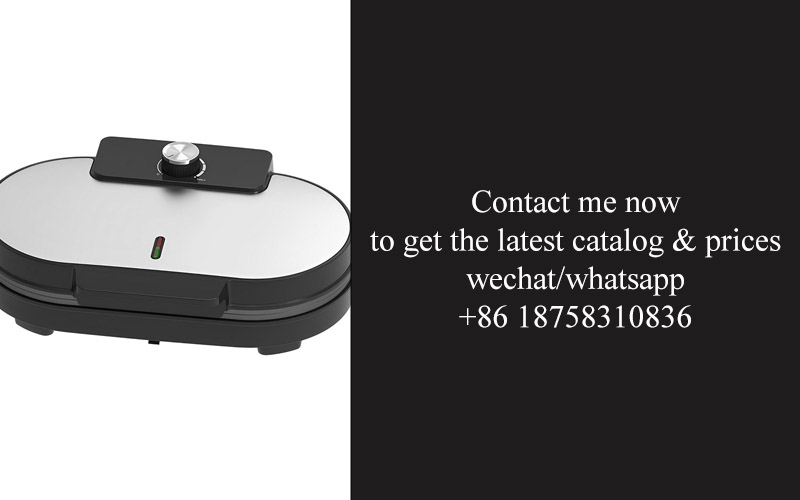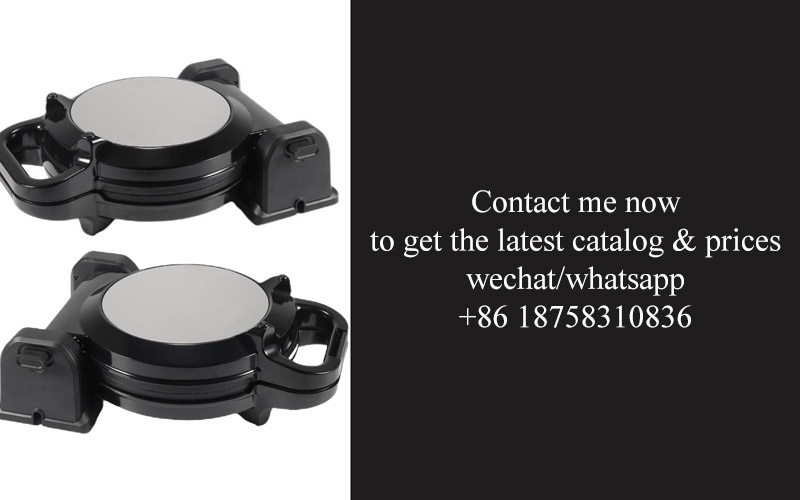Address
304 North Cardinal
St. Dorchester Center, MA 02124
Work Hours
Monday to Friday: 7AM - 7PM
Weekend: 10AM - 5PM
Address
304 North Cardinal
St. Dorchester Center, MA 02124
Work Hours
Monday to Friday: 7AM - 7PM
Weekend: 10AM - 5PM

As the kitchen transforms into a high-tech hub of convenience and efficiency, it’s the heart of innovation that drives this culinary revolution. The intersection of cutting-edge technology and everyday cooking is where the magic happens, and the future of cooking is set to be rewritten with the advent of new IC technologies. Let’s explore the potential and promise that lies ahead.
In the heart of our homes, where culinary magic unfolds, a revolution is quietly taking place. The rise of smart kitchen appliances has transformed the way we interact with our cooking spaces, offering a glimpse into a future where technology and taste meet seamlessly. Imagine a kitchen where your appliances anticipate your needs, where efficiency is paramount, and where the art of cooking is elevated to new heights.
Gone are the days of the simple stove and refrigerator. Today’s kitchen is a hub of innovation, with appliances that not only save time and energy but also enhance the cooking experience. Smart ovens, equipped with integrated circuit (IC) boards, can precisely control temperature and cooking times, ensuring that every dish is cooked to perfection. These advanced ICs are the backbone of modern kitchen technology, driving the rise of smart appliances.
The integration of ICs has allowed for the development of appliances that can communicate with each other, creating an interconnected kitchen ecosystem. A smart refrigerator, for instance, can not only keep your food fresh but also suggest recipes based on the ingredients you have on hand. It can even order more groceries when you’re running low, all through the power of the IC board.
As we delve deeper into this era of smart kitchen appliances, it’s clear that the technology behind these devices is rapidly evolving. The latest IC board factories are at the forefront of this transformation, producing chips that are more efficient, compact, and powerful than ever before. These factories are not just manufacturing components; they are crafting the future of our kitchens.
The efficiency of smart appliances is not just a matter of convenience; it’s a nod to environmental responsibility. With features like automatic energy-saving modes and adaptive cooking settings, these appliances are designed to minimize waste and reduce our carbon footprint. The IC boards that power these devices are optimized for energy efficiency, ensuring that your kitchen is not just smart but also sustainable.
The user experience is another area where smart kitchen appliances have made significant strides. Touchscreens, voice-activated controls, and intuitive interfaces have made these appliances more accessible and user-friendly. The IC board plays a crucial role in this, providing the processing power needed to handle complex commands and deliver seamless performance.
But it’s not just about what these appliances can do; it’s also about how they enrich our lives. Smart kitchen appliances are designed to adapt to our habits and preferences, learning from our cooking patterns and suggesting improvements. They can track our dietary needs, helping us to maintain a balanced diet, and even provide nutritional information right on the screen.
As we look ahead, the potential for innovation in the smart kitchen appliance market is vast. The latest IC board technology is paving the way for appliances that can predict and prepare meals, based on our schedules and health goals. Imagine a future where your kitchen is not just a place to cook but a personal chef, tailored to your lifestyle.
In this future, the kitchen will be a space of collaboration between humans and technology. IC board factories are not just producing chips; they are creating the intelligence that will make our lives easier, healthier, and more enjoyable. The rise of smart kitchen appliances is not just a trend; it’s a testament to the relentless pursuit of progress and the endless possibilities that lie ahead.
As we embrace this new era, it’s important to remember that the heart of the kitchen remains the same: the love of cooking and the joy of sharing meals with family and friends. Smart appliances may add a layer of sophistication and efficiency, but they do so without compromising the essence of culinary tradition. The rise of smart kitchen appliances is not just a technological advancement; it’s a celebration of the future of food and the role that technology will play in shaping it.

In today’s rapidly evolving kitchen landscape, the heart of modern appliances beats with the power of integrated circuit (IC) boards. These tiny marvels of technology have revolutionized the way we interact with our kitchen gadgets, turning once simple devices into smart, connected companions.
IC boards are the unsung heroes of kitchen electronics, packing a punch of sophistication into their compact frames. From the sleek induction cooktop to the quiet, energy-efficient refrigerator, these boards are the masterminds behind the scenes. They process information, manage energy, and control a myriad of functions, all while remaining discreet and efficient.
Imagine a countertop oven that can not only bake to perfection but also sync with your smartphone. This level of connectivity is made possible by the intricate web of IC boards within. They facilitate the exchange of data, ensuring that your oven is preheated just as you step through the door, or your refrigerator is stocked with your favorite items before you even reach the store.
The precision and reliability of IC boards are paramount in kitchen appliances. Cooking at the right temperature is crucial for preserving flavor and texture, and IC boards ensure that these delicate balances are maintained. They regulate heat distribution in ovens, control the power output in microwaves, and even monitor the water levels in dishwashers, all with pinpoint accuracy.
Energy efficiency is another area where IC boards play a pivotal role. As sustainability becomes a top priority in consumer electronics, these boards are designed to minimize energy consumption. Smart refrigerators, for instance, use ICs to optimize cooling cycles, reducing energy use without compromising performance. Similarly, LED lighting in kitchen appliances is often powered by IC boards that efficiently convert energy, providing a bright, long-lasting light while using less power.
Innovation in IC technology has led to the integration of artificial intelligence and machine learning capabilities. Smart appliances can now learn from your habits and preferences, adjusting settings automatically to provide a more personalized cooking experience. For instance, an IC board in a smart oven can analyze your recipes and suggest the ideal cooking time and temperature, based on its vast database of cooking data.
Security is also a critical factor, and IC boards are integral to the safety of kitchen appliances. They enable secure communication between devices and can even detect irregularities in performance that might indicate a fault. This proactive approach to safety means that potential issues can be addressed before they become problems, ensuring the longevity and reliability of your kitchen electronics.
The manufacturing process of IC boards is an art form in itself, requiring precision and advanced technology. Factories dedicated to producing these intricate components operate under strict quality control measures. They use cutting-edge equipment to create these tiny circuits, each one meticulously designed to perform its specific function within a kitchen appliance.
As we look to the future, the role of IC boards in kitchen electronics will only become more significant. With the advent of the Internet of Things (IoT), these boards will likely become even more interconnected, allowing for seamless integration of kitchen appliances with other smart home systems. This means your coffee machine could automatically adjust the strength of your brew based on the time of day or your current mood, thanks to the intelligence embedded in its IC board.
The evolution of integrated circuit boards in kitchen electronics is a testament to human ingenuity and our relentless pursuit of convenience and efficiency. From the mundane tasks of cooking and cleaning to the sophisticated pleasures of gourmet dining, these tiny circuits are making our lives easier and more enjoyable. It’s clear that as long as we keep pushing the boundaries of technology, the role of IC boards will continue to grow, transforming our kitchens into smart, responsive environments that cater to our every need.

In the heart of technological advancement, integrated circuit (IC) board factories have become the pulse of modern innovation. These facilities are not just hubs of production; they are the crucible where cutting-edge technologies are forged, reshaping the landscape of kitchen electronics.
The evolution of IC boards in kitchen appliances has been nothing short of remarkable. Once a simple component, these boards have transformed into complex systems that manage the intricate operations of modern kitchen gadgets. Today, they are the backbone of smart appliances, controlling everything from temperature to cooking modes.
One of the latest developments in IC board factories is the miniaturization of components. This has allowed for sleeker designs in kitchen electronics, where space is often at a premium. The smaller size of ICs means that appliances can be more compact, yet still packed with advanced features. It’s a testament to the engineering marvels that have emerged from these factories.
Material science has also made significant strides. New materials like gallium nitride (GaN) are being used to create more efficient and durable IC boards. GaN is known for its high thermal conductivity and low on-state resistance, making it ideal for power management in kitchen appliances. This not only improves performance but also extends the life of the devices.
Automation is another key advancement. IC board factories have embraced robotics and artificial intelligence to streamline the production process. Robots handle tasks that were once done by hand, ensuring precision and reducing the likelihood of errors. AI systems monitor and optimize production lines, predicting maintenance needs and adjusting processes for optimal efficiency.
The integration of sensors has been a game-changer. Modern IC boards are equipped with a variety of sensors that can detect everything from humidity to the presence of food. This not only enhances the functionality of kitchen appliances but also improves user experience. For instance, an oven with a humidity sensor can adjust its settings to ensure the perfect bake every time, without the need for constant manual intervention.
Energy efficiency is a growing concern, and IC board factories are responding with innovative solutions. They are designing chips that consume less power while maintaining or even improving performance. This not only benefits the environment but also saves consumers money on energy bills. The result is a more sustainable kitchen appliance market.
In the realm of connectivity, IC boards are now the gateway to the smart home. These boards enable appliances to communicate with each other and with the user, often via mobile apps. The ability to control and monitor kitchen appliances remotely is transforming the way we interact with our kitchens. It’s a shift that’s making cooking more convenient and personalized than ever before.
Security is another critical aspect that IC board factories are focusing on. As kitchen appliances become more connected, the need for robust cybersecurity measures is paramount. These factories are integrating advanced security protocols into IC boards to protect against potential threats. This ensures that users’ data and appliances remain safe from cyber-attacks.
The customization of IC boards is also becoming more prevalent. Factories are now able to tailor the circuits to specific appliance models, optimizing performance for each device. This level of customization allows for greater efficiency and a longer lifespan for kitchen electronics.
Lastly, the focus on environmental sustainability is evident in the manufacturing processes. IC board factories are adopting greener practices, such as recycling and reducing waste. They are also investing in renewable energy sources to power their operations, reflecting a broader commitment to environmental stewardship.
In conclusion, the latest developments in IC board factories are revolutionizing the kitchen electronics industry. From miniaturization and material advancements to automation, sensor integration, energy efficiency, connectivity, security, customization, and sustainability, these factories are at the forefront of innovation, shaping the future of our kitchens.

In the heart of modern kitchen appliances, integrated circuit (IC) boards are the unsung heroes, quietly driving efficiency and innovation. These tiny, intricate components are the backbone of smart cooking technology, ensuring that every sizzle and simmer is powered by precision and intelligence.
The evolution of IC boards in kitchen electronics has been a game-changer. Once, the cooking experience was a blend of intuition and guesswork, but now, with the integration of IC technology, it’s a symphony of controlled precision. These boards are the architects of modern kitchen appliances, orchestrating a dance of power, temperature, and timing that results in culinary perfection.
Gone are the days of guessing the right temperature for a roast or the perfect setting for a slow-cooked stew. IC boards now manage these variables with a finesse that even the most seasoned chefs might envy. They regulate the heat distribution in ovens, ensuring that every inch of the dish receives the same level of cooking. The result? Uniformly cooked meals that are as visually appealing as they are delicious.
In induction cooktops, IC boards play a pivotal role. They detect the presence of a pan and adjust the power output accordingly, providing instant heat that is both efficient and safe. This technology not only reduces cooking times but also minimizes energy consumption, making it a favorite among eco-conscious cooks. The precision of these boards means that the heat is delivered only when needed, eliminating waste and ensuring that energy is used effectively.
But it’s not just about heat. IC boards also control the flow of water in dishwashers and washing machines, optimizing the cleaning cycle for the best results. The sensors embedded in these boards can detect the cleanliness of the dishes, adjusting the cycle time and water usage to ensure a thorough clean without excess water or detergent.
The silent operation of modern kitchen appliances is another testament to the power of IC boards. In contrast to the loud buzzing of older models, today’s appliances run smoothly and quietly, thanks to the precision and efficiency of their IC-driven components. This not only improves the user experience but also reduces noise pollution in the home.
In refrigerators, IC boards are responsible for maintaining the perfect temperature, ensuring that food stays fresh for longer. They monitor the internal environment and adjust the cooling system accordingly, preventing food spoilage and extending the shelf life of produce and dairy products.
The integration of connectivity features in kitchen electronics is also a marvel of IC board innovation. Smart appliances can now be controlled remotely through smartphones or tablets, allowing users to preheat ovens or start dishwashers before they even step into the kitchen. This level of convenience is made possible by the sophisticated IC boards that manage the communication between the appliance and the user.
Safety is another area where IC boards have made significant strides. They monitor for leaks in gas cooktops and ovens, shutting off the gas supply immediately if a leak is detected. This feature has become a crucial aspect of modern cooking, offering peace of mind to users who value their safety and the safety of their families.
As we look to the future, the potential of IC boards in kitchen electronics is limitless. New developments in material science and manufacturing processes are leading to even smaller, more energy-efficient, and more powerful ICs. This means that appliances will continue to become more intuitive, more efficient, and more integrated into our daily lives.
In the realm of smart cooking, IC boards are the silent powerhouses that transform the kitchen into a high-tech culinary workshop. They are the driving force behind the sizzle and the silence, ensuring that every dish is not just cooked but cooked to perfection. The future of cooking is bright, and it’s powered by the incredible innovations happening in IC board factories around the world.

In the realm of modern kitchen appliances, the integration of advanced integrated circuit (IC) technology has revolutionized the user experience, transforming the way we interact with our culinary tools. This evolution has not only enhanced functionality but also brought a new level of convenience, precision, and efficiency to the cooking process.
The precision and speed of modern cooking appliances are unparalleled, thanks to the sophisticated ICs that power them. These microchips act as the brain of the appliance, processing complex algorithms to ensure every aspect of cooking is optimized. From maintaining consistent temperatures in ovens to adjusting cooking times in smart cookers, ICs play a pivotal role in delivering results that would have been nearly impossible with traditional methods.
One of the most noticeable impacts of advanced IC technology on user experience is the reduction in noise levels. Older appliances often produced a considerable amount of noise, which could be quite intrusive in a kitchen setting. Today’s smart appliances, however, are equipped with quieter motors and better noise-dampening technology, thanks to ICs that control the appliance’s performance with greater precision. This quieting effect has made cooking a more enjoyable and less stressful experience for many users.
The user interface has also seen significant improvements due to IC technology. Touchscreens, voice controls, and even augmented reality (AR) interfaces have become commonplace in modern kitchen appliances. These advancements allow users to interact with their appliances in more intuitive ways. Touchscreens provide a clean, digital interface that is easy to navigate, while voice controls offer hands-free operation, which is especially convenient when cooking hands-on dishes. AR interfaces, such as those found in some high-end ranges, can guide users through complex recipes by overlaying cooking instructions on the stovetop itself.
Customization has become another hallmark of the modern kitchen experience, largely due to the power of ICs. Users can now tailor their appliances to meet their specific needs. For instance, an oven with an advanced IC can learn a user’s preferences and adjust cooking settings accordingly. Smart fridges can analyze dietary habits and suggest meal plans, while dishwashers can optimize cleaning cycles based on the type and amount of dishes. This level of personalization has made kitchen appliances not just tools but companions that adapt to the user’s lifestyle.
The integration of smart sensors has also had a profound impact on the user experience. These sensors can detect everything from the moisture level in bread dough to the exact temperature of a pan, ensuring that every aspect of cooking is controlled with precision. Users no longer have to guess or monitor their appliances closely; the ICs take care of it. This has reduced the risk of undercooking or overcooking and has made it easier for novices to achieve professional results.
Energy efficiency has become a critical factor in kitchen appliance design, and IC technology has been instrumental in this shift. Appliances with advanced ICs can detect when they are not in use and automatically adjust their power consumption. For example, a smart oven can enter a low-power mode when it senses that it’s not being used, reducing energy waste. This not only saves money on utility bills but also aligns with the growing demand for environmentally friendly products.
Moreover, the connectivity offered by ICs has expanded the possibilities for kitchen appliances. Users can now control their appliances remotely through smartphones or tablets. This means they can preheat their oven while still at work or start their coffee maker on their way home. The ability to integrate kitchen appliances with other smart home devices also adds to the convenience. Imagine a scenario where your fridge automatically orders groceries when you’re running low, or your stove turns on when you arrive home—these are just a few examples of how IC technology is enhancing the user experience in unprecedented ways.
In conclusion, the impact of advanced IC technology on the user experience in kitchen electronics is undeniable. It has brought about a new era of convenience, efficiency, and personalization. As ICs continue to evolve, we can expect even more innovative features that will further transform the way we cook and live.

In today’s fast-paced world, staying ahead in the kitchen isn’t just about culinary skills; it’s about harnessing technology to streamline cooking experiences. The latest industry trends in kitchen appliances are reshaping the way we interact with our kitchens, and these insights offer a glimpse into the future of culinary innovation.
The integration of smart technology in kitchen appliances has become a game-changer. From fridges that track your groceries to ovens that can adjust their settings based on the recipe, these advancements are not just convenient but also incredibly intuitive. Users can now expect appliances that learn from their habits and preferences, creating a personalized cooking environment.
Sustainability is another key trend. As environmental concerns grow, manufacturers are focusing on energy-efficient appliances that reduce carbon footprints. Smart kitchen devices are designed to use less energy while still delivering top performance, making them an eco-friendly choice for environmentally conscious consumers.
The rise of voice-activated kitchen gadgets is undeniable. With the increasing popularity of smart assistants like Amazon’s Alexa and Google Assistant, kitchen appliances are becoming more interactive. Users can now control their ovens, toasters, and even coffee makers with simple voice commands, making the kitchen a more hands-free and accessible space.
The demand for connectivity is also on the rise. Modern kitchen appliances are no longer standalone devices; they are part of a larger smart home ecosystem. This connectivity allows for seamless integration with other smart devices, such as smartphones, tablets, and computers. Users can monitor and control their kitchen appliances remotely, ensuring that dinner is ready even when they’re not at home.
Design has also evolved to become a crucial factor in kitchen appliance sales. Appliances that blend style with functionality are becoming increasingly popular. Sleek designs and innovative materials are not just about aesthetics; they also contribute to a more modern and cohesive kitchen aesthetic.
In the realm of cooking technology, there’s a growing interest in precision and control. High-tech appliances equipped with advanced sensors and digital interfaces offer users the ability to fine-tune cooking parameters, resulting in more consistent and delicious outcomes. This level of control is especially appealing to food enthusiasts and professional chefs alike.
The industry is also witnessing a shift towards modular kitchen appliances. These are designed to be customized and expanded, allowing users to build their perfect kitchen setup. This modular approach not only offers flexibility but also encourages innovation, as manufacturers can create new combinations of appliances that cater to diverse cooking needs.
As we delve deeper into the world of smart kitchen appliances, there’s a noticeable emphasis on health and wellness. Appliances that promote healthy cooking, such as air fryers and slow cookers, are becoming more popular. These devices not only help in reducing oil usage but also provide healthier cooking options for families and individuals looking to improve their diet.
Security is another critical aspect that the industry is addressing. With the rise of smart kitchen appliances, there’s a need for robust security measures to protect users’ personal data and prevent unauthorized access. Manufacturers are incorporating advanced encryption and authentication technologies to ensure that users’ information remains secure.
Lastly, the industry is investing heavily in research and development to address the challenges of the future. This includes exploring new materials that can withstand harsh kitchen environments, developing more energy-efficient components, and creating appliances that are more accessible to people with disabilities.
The latest industry trends in kitchen appliances are a testament to the power of innovation. They reflect a commitment to improving user experiences, making cooking more efficient and enjoyable, and contributing to a healthier, more sustainable world. As these trends continue to evolve, we can expect even more exciting developments that will further transform the way we interact with our kitchens.

In the realm of kitchen appliances, the fusion of design and functionality has reached new heights, all thanks to the advancements in integrated circuit (IC) technology. These IC-driven appliances are not just tools for cooking; they are extensions of modern living, blending seamlessly into our homes with a sophistication that speaks to both our aesthetic senses and our desire for convenience.
The sleek lines and minimalist aesthetics of today’s kitchen appliances are no longer just about looks; they are a testament to the precision engineering that underpins each device. The integration of ICs has allowed for a level of design that was once only a dream, with appliances that are not only functional but also a visual delight.
Consider the refrigerator, once a bulky, utilitarian appliance, now transformed into a sleek, smart storage solution. ICs have enabled the incorporation of touchscreens, allowing users to adjust settings with a simple tap, and even connect to their smartphones for remote management. The result is a fridge that not only keeps food fresh but also serves as a digital hub in the kitchen.
Similarly, ovens and stovetops have evolved beyond mere heat sources. With ICs, these appliances can now offer precise temperature control, ensuring that every dish is cooked to perfection. The smart sensors embedded in these appliances can detect the exact cooking requirements of different foods, adjusting the heat accordingly. This not only saves energy but also saves time and effort for the user.
In the world of dishwashers, ICs have introduced a new era of efficiency. Modern dishwashers can now optimize their cycles based on the load, choosing the most energy-efficient program for each situation. The sensors detect the level of soil on the dishes, adjusting the water usage and cleaning time, leading to significant water and energy savings.
The integration of ICs has also revolutionized the way we interact with kitchen appliances. Voice commands, motion sensors, and even AI have become commonplace, turning appliances into interactive devices that can learn from our habits and preferences. For instance, a smart oven can remember your favorite cooking settings and automatically adjust the temperature and cooking time for your favorite recipes.
The design of these IC-driven appliances is not just about aesthetics; it’s about creating a cohesive and intuitive kitchen environment. The ergonomics of these devices are carefully considered, with controls placed within easy reach and interfaces that are easy to navigate. This attention to detail ensures that the user experience is seamless, reducing the frustration that can come with complicated appliances.
Moreover, the integration of ICs has allowed for the inclusion of safety features that were once unimaginable. For example, a smart stove can detect when a pot has been left unattended and automatically shut off the heat, preventing accidents. The same goes for ovens, which can be equipped with sensors that detect smoke or a fire and alert the user immediately.
As we delve deeper into the intersection of design and functionality, it’s clear that the future of kitchen appliances is not just about making cooking easier, but also about enhancing the overall experience of being in the kitchen. The fusion of advanced technology with thoughtful design has created a new category of appliances that are not just tools but companions in our daily lives.
From the kitchen island to the countertop, IC-driven appliances are becoming an integral part of our daily routines. They are not just efficient and reliable; they are also beautiful and intuitive. The evolution of these appliances is a testament to the power of innovation and the relentless pursuit of excellence in every aspect of our lives. As we continue to embrace this new era of kitchen technology, we can expect our kitchens to become not just functional spaces but also havens of comfort and convenience.

In the realm of integrated circuit (IC) board manufacturing, the quest for quality and reliability is paramount. Every detail, from the raw materials to the final product, must meet stringent standards to ensure that the ICs power the appliances of tomorrow effectively and efficiently. Here’s a closer look at the meticulous process that guarantees the integrity of these essential components.
Precision in Materials SelectionThe journey to a reliable IC board begins with the selection of raw materials. High-purity metals, such as copper and gold, are chosen for their conductivity and resistance to corrosion. Polymers and ceramics, which form the basis of the board’s substrate, must maintain stability under various environmental conditions. These materials are not just picked at random; they are meticulously tested to ensure they meet the industry’s strict quality benchmarks.
Advanced Fabrication TechniquesOnce the materials are chosen, the process of IC board manufacturing involves a series of intricate steps. The substrates are coated with a thin layer of copper, etched to create the desired circuit patterns, and then covered with insulating layers to prevent short circuits. The precision of these steps is critical, as even a small error can compromise the board’s performance. Advanced techniques like photochemical etching and laser cutting are employed to achieve the highest level of accuracy.
Substrate Technology EvolutionThe evolution of substrate technology has been a game-changer in IC board manufacturing. From traditional glass epoxy to high-frequency materials like laminates and ceramic substrates, the choice of substrate has a direct impact on the board’s performance. Modern substrates offer better thermal management, electrical characteristics, and durability, making them ideal for high-performance applications in kitchen electronics.
Quality Control ProtocolsQuality control is not a one-time event but an ongoing process throughout the manufacturing cycle. Each step, from material inspection to final product testing, is subject to rigorous protocols. Automated systems check for defects such as shorts, opens, and misalignments. Human inspectors also play a vital role, ensuring that the visual and functional standards are met. This multi-layered approach ensures that only boards of the highest quality leave the factory.
Environmental ComplianceThe manufacturing of IC boards also involves environmental considerations. Factories must adhere to strict regulations regarding waste disposal and emissions. Recycling programs for materials like copper and gold are in place to minimize environmental impact. Energy-efficient manufacturing processes are also implemented to reduce the carbon footprint of IC board production.
Innovation in Testing EquipmentThe testing phase is where the true reliability of an IC board is verified. Advanced testing equipment, such as automatic optical inspection (AOI) systems and flying probe testers, are used to simulate real-world conditions and identify any potential issues. These machines can test thousands of parameters in a matter of seconds, providing a comprehensive quality assurance.
The Role of Standards OrganizationsStandards organizations like the International Electrotechnical Commission (IEC) and the Institute of Electrical and Electronics Engineers (IEEE) play a crucial role in setting the benchmarks for IC board manufacturing. These organizations ensure that the industry follows a common set of rules, making it easier for manufacturers to produce reliable and interoperable products.
Collaboration Between Manufacturers and SuppliersThe reliability of IC boards is not solely the responsibility of the manufacturers. Collaboration with suppliers is key. Trusting relationships with raw material suppliers ensure a consistent supply of high-quality components. Regular audits and feedback loops help maintain these relationships, further enhancing the quality and reliability of the final product.
The Continuous Pursuit of ExcellenceIn a rapidly evolving industry, the pursuit of excellence in IC board manufacturing is an ongoing journey. Continuous improvement initiatives are a hallmark of leading manufacturers, who are always seeking new ways to innovate and refine their processes. From the development of new materials to the implementation of cutting-edge testing methods, the drive for quality and reliability never wanes.
In the world of integrated circuit board manufacturing, the stakes are high. The reliability of these boards directly impacts the functionality and lifespan of kitchen electronics. By adhering to stringent quality standards, investing in advanced technology, and fostering a culture of collaboration and continuous improvement, manufacturers are able to deliver IC boards that power the modern kitchen with precision and dependability.

In the ever-evolving landscape of culinary technology, the role of integrated circuits (ICs) is becoming more integral than ever. As we delve into the future of cooking, it’s clear that the innovations in IC technology are not just enhancing appliances but reshaping entire kitchen experiences. From precision cooking to hands-free operation, let’s explore what new IC technologies are on the horizon.
The Precision of Precision CookingOne of the most exciting developments in IC technology is its ability to drive precision cooking. Imagine a scenario where your oven not only heats up to the exact temperature you set but also adjusts its cooking patterns to accommodate the type of food you’re preparing. ICs are now capable of analyzing the heat distribution and cooking time to ensure that your meal is cooked to perfection every time.
Energy Efficiency RedefinedEnergy consumption is a major concern in the kitchen, and ICs are playing a pivotal role in making appliances more energy-efficient. Advanced ICs can optimize the use of energy by managing the power output of kitchen appliances more effectively. For instance, an IC-driven refrigerator can adjust its cooling cycles based on the ambient temperature and the contents inside, saving electricity while maintaining the ideal storage conditions.
Interactive Cooking with Voice RecognitionThe rise of smart kitchens has been fueled by ICs that enable voice-activated appliances. From setting timers to adjusting oven temperatures, these voice recognition systems are making cooking more interactive and hands-free. As IC technology advances, we can expect more intuitive interfaces that allow users to control their kitchen devices with simple commands, enhancing the overall cooking experience.
Customization Through AI IntegrationArtificial intelligence (AI) is another frontier where ICs are making significant strides. By integrating AI, kitchen appliances can learn from your preferences and habits, offering personalized cooking recommendations and even adjusting recipes based on the ingredients you have on hand. This level of personalization is made possible by ICs that process vast amounts of data quickly and accurately.
Sustainability and Smart SensorsSustainability is a growing concern, and ICs are contributing to greener kitchens in more ways than one. Smart sensors embedded in appliances can detect when food is fully cooked or when a pot of water has reached its boiling point, preventing unnecessary energy use. These sensors are often powered by low-energy ICs, making them a cornerstone in creating a more eco-friendly kitchen environment.
Health Monitoring and Nutritional GuidanceWith the increasing focus on health and wellness, ICs are being used to monitor and enhance our health in the kitchen. For example, a smart blender might analyze the nutritional content of your smoothie ingredients and provide feedback on the health benefits of your drink. Similarly, an oven equipped with an IC might alert you to the fat content of the food you’re preparing, helping you make healthier choices.
Real-Time Data and AnalyticsThe data generated by kitchen appliances can be invaluable for users looking to improve their cooking skills or dietary habits. ICs are at the heart of this data revolution, processing and analyzing real-time data to provide insights into cooking performance, energy consumption, and even food waste. This information can be used to refine cooking techniques, reduce energy costs, and minimize waste.
Enhanced Safety FeaturesSafety is paramount in the kitchen, and ICs are continuously being improved to provide advanced safety features. From automatic shut-off mechanisms to leak detection systems, ICs are making kitchen appliances safer. These features are crucial in preventing accidents and ensuring that cooking environments are secure for all users.
The Future is Here, and It’s SmartAs we look to the future, it’s clear that the role of IC technology in kitchen appliances is only going to become more significant. With ongoing advancements, we can anticipate a future where our kitchens are not just places to cook but smart environments that cater to our needs and preferences. The integration of cutting-edge IC technology promises a kitchen experience that is more efficient, personalized, and enjoyable than ever before.

The relentless march of innovation in the kitchen electronics sector has reshaped the way we interact with our appliances. From smart ovens that can predict cooking times to refrigerators that can reorder groceries, the role of integrated circuits (ICs) in driving this transformation is undeniable. Here’s a closer look at the impact of this technological evolution.
In the heart of every modern kitchen appliance lies a microcosm of precision and efficiency: the integrated circuit board. These intricate pieces of technology are the unsung heroes of the kitchen, managing the complex dance of power, data, and control that keeps our devices running smoothly.
The evolution of IC technology has allowed for the miniaturization of components, enabling appliances to become more compact and energy-efficient. Imagine a sleek induction cooktop that not only heats food faster but also reduces energy consumption by up to 50%. The reason behind this efficiency is the sophisticated ICs that optimize power distribution and manage heat generation with precision.
User experience has been significantly enhanced by the integration of advanced IC technology. Appliances are now equipped with intuitive interfaces that allow users to control settings and monitor cooking progress with ease. The smart kitchen is no longer a futuristic dream; it’s a reality made possible by ICs that can process vast amounts of data in milliseconds, providing real-time feedback and adjustments.
In the realm of kitchen electronics, the intersection of design and functionality is a harmonious blend that ICs facilitate. Take the case of a smart blender that not only crushes ice with ease but also offers a variety of programs tailored to different ingredients. The IC board inside ensures that the machine operates at the optimal speed for each task, from blending smoothies to chopping nuts.
The manufacturing of integrated circuit boards is a meticulous process that demands stringent quality and reliability standards. Every IC is a testament to the precision of the manufacturing process, with layers upon layers of circuitry etched onto a tiny substrate. Quality control measures are in place to ensure that each board meets the rigorous specifications required for kitchen appliances, where failure is not an option.
As we look ahead, the future of cooking is illuminated by the potential of new IC technologies. Quantum computing is on the horizon, promising to revolutionize the way appliances process information, potentially leading to more personalized and efficient cooking experiences. Nanotechnology could lead to even smaller, more energy-efficient ICs, further enhancing the capabilities of kitchen appliances.
The rise of IoT (Internet of Things) in kitchen appliances means that ICs will play a crucial role in connecting our kitchen devices to the wider world. Imagine a scenario where your oven receives recipe recommendations from your smartphone based on the ingredients you have in stock. The seamless integration of ICs in these devices will make such scenarios not just possible, but commonplace.
The kitchen electronics sector is a testament to the power of innovation. As we continue to push the boundaries of what’s possible, the role of IC technology will only grow more significant. From the smallest kitchen gadget to the most advanced kitchen system, ICs are the silent architects of the modern kitchen, ensuring that our cooking experiences are not only efficient but also enjoyable and tailored to our needs.
In conclusion, the unstoppable force of innovation in the kitchen electronics sector is driven by the relentless pursuit of better, more efficient, and more user-friendly appliances. IC technology is at the forefront of this revolution, and as it continues to evolve, so too will our culinary experiences, promising a future where the kitchen is not just a place to cook, but a hub of technological innovation and culinary delight.